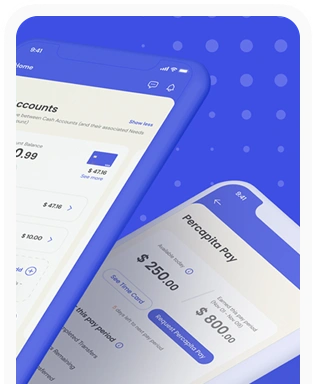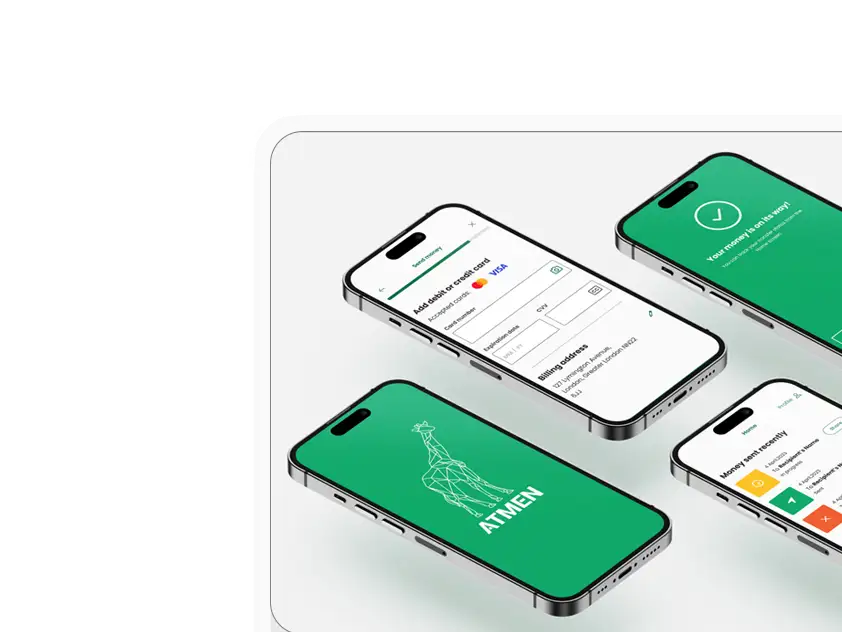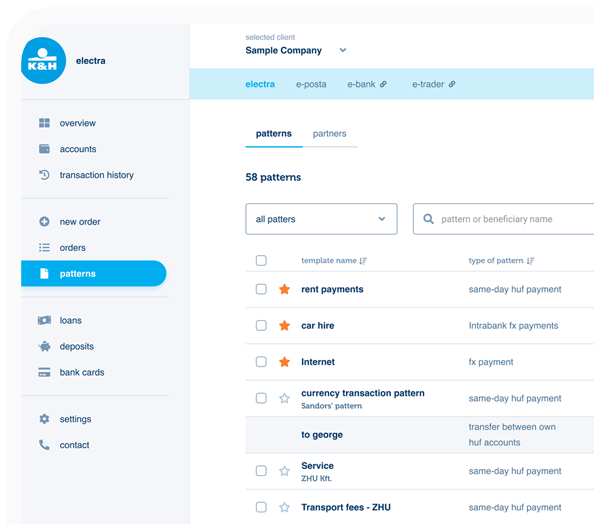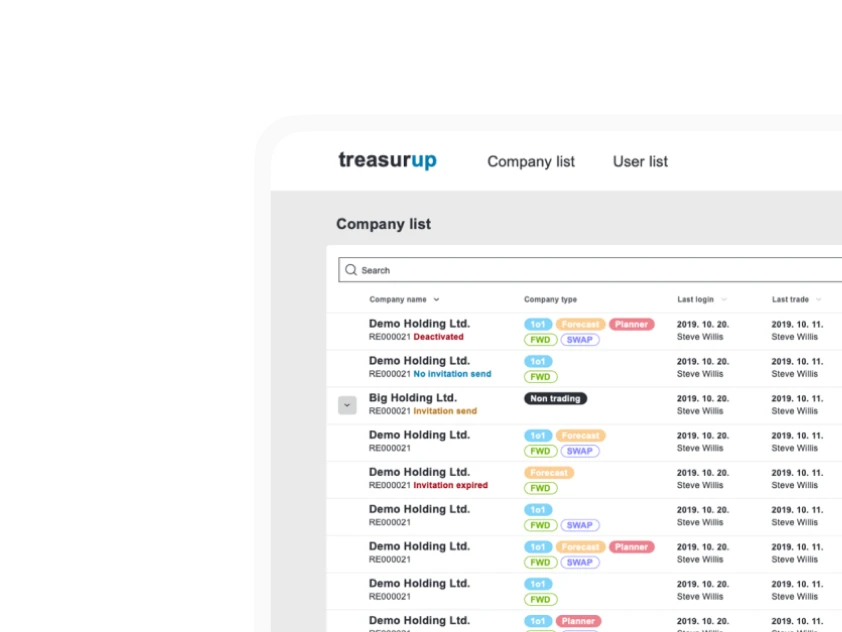The cash experience: Should we go all-in digital right now?
In this article, we explore the end users’ perceived advantages of using physical cash. We look at the processes and life situations when using cash feels safer or more fun and practical than using any kind of digital payment solution. Until we fully understand what motivates people to stick with cash, we will never complete our mission to run all payments on green, quick, easy-to-follow, controlled digital solutions. But while learning how to digitise use cases related to cash we learn as well how to create digital experiences that meet and conform better the mental models of our fellow citizens.
The pain of paying
Cash is one of the most common tools to transfer, receive, or store value. When talking about the cash experience I mean areas that an empathy map would cover in our UX practice. What do the people do, see, feel, think, and hear when they hand over, receive, or store cash? What are their worries, fears, or joys in some cases?
One thing we know quite well from psychological research is that paying with cash is painful. This fact was proven by Ofer Zellermayer who conducted his research in 1996 and confirmed since that time by several other researchers. His supervisor George Loewenstein said about payments: “You swipe the card and it doesn’t feel like you’re giving anything up to make the purchase, unlike paying cash where you have to hand over bills.”
We can conclude: The greater the transparency, the more painful and aversive it is for the consumer to part with their money.
Do we want a cashless society?
But if paying with cash is so painful, should we get rid of it immediately? Many people think so, including me. But then I started to dig deeper into this topic. Digital money handling is greener, more effective, cleaner and helps governments to limit transactions related to criminal or tax avoidance activities.
Cash transaction values fell steeply around the world. Cash usage fell to an historical low around the world after COVID, representing only 5% of POS transaction volume in Canada and Norway, 18% in the USA (2023 data), and less than 10% in markets as diverse as Australia, Hong Kong, and Sweden.
India even declared an official war on cash demonetising the 500 and 1000 rupee banknotes. All these sounds good. We are progressing but should we really pressure this seemingly irreversible process? Will it be good for all social groups in every situation?
Physical money is old
When we work on destroying cash we have to take into account its origins, all the related use cases and also what it represents in our cultures.
As far as we know money is approximately 5000 years old; it was invented in the Middle East. One of the first well-preserved tokens, from the Mesopotamian town of Sippar under the reign of King Ammi-Ditana (1683–1640s BC) that states that its bearer should receive a specific amount of barley at harvest time. The first metal coins from electrum were minted in Lydia in the sixth. century BC, while the first paper money was created in China 1000 years ago under the rule of Song dynasty.
 Mesopotamian clay token, Lydian electrum coin, Paper money from China
Mesopotamian clay token, Lydian electrum coin, Paper money from China
Money is old. Habits are strong. And we know that the older something is, the harder it is to change. But we don’t give up. We want a change because we believe in the values of digital solutions. How do we start?
Digitalisation approaches
When we want to craft digital solutions, we have several options. The first, most common option is to use standard digital tools and mechanisms and transform the physical experience by turning them into a digital one. It is like translating a novel from Russian to German. It is not easy; it needs creativity but in essence it stays the same thing. A good example of this approach the invention of web shops.
Digitalisation also enables us to democratise use cases. Five hundred years ago a drunken lord coming home by midnight would not worry too much about finding his keys. His servant would open the door for him when he recognised his lord’s face or drunken voice. Anybody can enjoy the same type of service nowadays, thanks to smart locks.
Another source of digital solutions is by extracting experiences from fairy tales or sci-fi novels to our worlds. Turning on the lights by words is possible now with Google Home or Alexa.
And of course there are completely new experiences in our lives, I can’t recall any fairytale featuring something like Instagram or Tik-Tok.
When we try to replace cash, we use all these methods but we mostly rely on the first approach. It’s even more critical therefore to understand how cash works and even more importantly how people think cash works.
We created digital money run by banks. We have cryptocurrencies. Many states like Sweden or China are working on central bank digital currencies (CBDCs), We have digital swap sites to eliminate cash.
These solutions even offer extra benefits. We can send money to remote locations, exchange it during the sending process. We can also store unlimited amounts of money on a small computer or we can automate financial transactions that we could not do before. We are good at transformation and offering something more. But are we good? Cash is old and maybe useless so it should go.
People who use cash
Digital solutions offer a lot of obvious advantages but there are still a lot of people who do not use or do not want to use them. We won’t focus on how to convince, teach, or enable them to use digital solutions but it is good to see who they are because most of the governmental and banking efforts are centred on them. We are working mostly on the transformation of people rather than experiences.
There are people who simply have no device for online banking. No smartphone. No Apple Macbook. No smartwatch. There’s not even a Google home in the tent. These people need to be enabled to have the appropriate tools.
Criminals and tax cheaters want to hide so they prefer to do their transactions in cash. Other respected citizens like doctors, psychologists, cleaners, and trainers who prefer to pay a little bit less tax. Cash is their friend, too. And of course there are the freedom fighters who simply hate to be tracked.
Some people just simply can’t use digital solutions because they lack the skills. Perhaps they can’t read or write or have some mental limitations or are simply not digitally literate.
Elderly people often find it hard to learn new things while it is easier to teach children how to use coins and colourful notes.
And let’s not forget about people who can’t use digital tools very well due to some physical limitations.
Cash has positive effects
But cash is not only important for people who can’t or don’t want to use digital money. It has positive effects discovered by Avni M. Shah, University of Toronto. As we know, paying with cash is painful. But this is good news as well. Avni has proven that we value things more if we by them with cash. The painful process makes the purchase more valuable.
In her first experiment, Shah approached 98 employees of a private university, asking each if they would like to purchase a mug. The mug was dark blue and displayed a university logo. Individuals were informed that the mug normally sold for $6.95 but was discounted to $2 as part of a promotion. Approximately two hours after the transaction, Shah approached everyone who had purchased a mug and asked them to complete a follow-up survey. She intended to buy back the mug but found that people who bought the mug with cash valued their mug much more than those who had purchased the mug with a card.
 A mug bought with cash can be valued much more
A mug bought with cash can be valued much more
Shan ran three other experiments to better understand how pain works for us during payments. She proved that if we increase the amount of the payment the pain grows bigger. This is not a big surprise but she additionally discovered that if we support organisations by donating cash the commitment and the attachment is stronger than if we donate digitally.
 The mechanism of cash payments
The mechanism of cash payments
An important lesson from these studies is that when we buy things with cash, there is less chance of replacing or throwing them away because they’ve gotten a bit old or scratched: the emotional connection is stronger due to the pain experienced when acquiring these objects.
The components of cash usage
It seems that cash is not as useless as the Indian government thinks. We can pay with it, we can use it to store value, but we can also show off with money or screw in a screw using a coin. We will cover all of these use cases to understand where they are better in some respect than the current online solutions at least in the brains of our users.
To understand our landscape properly, we have to quickly review who are the actors in our stories. The giver role is evident but we often forget that somebody is receiving and storing the cash too. They also feel, think, and breathe. And of course somebody wants to regulate these processes to make them smoother or more beneficial for some controlling entities.
People who believe in cash believe it offers the following benefits. They consider it reliable, convenient, fast, easy to learn to use, and easy to follow. Is all this true? Let’s check use cases in detail to understand what is behind these thoughts.
Cash in payments
Cash was originally invented to facilitate payments. Swapping seemed complicated in many cases therefore our ancestors started to play with clay tokens to make their lives easier. Let’s see whether there are still any use cases where cash is useful.
The most valuable feature from the giver’s perspective is that cash works anywhere, anytime. Do you have a bad signal? No problem. Are you on a beach without any clothes that have pockets? No problem. Are you in a warzone with somebody shooting around you? No problem. If you can stretch out your hands while holding some cash, somebody can stretch out their hands to collect your money. Cash works. This simplicity and reliability are a huge advantage. When you leave your house you should not think too much about the events that are waiting for you. If you have enough cash on you, you can solve them all. Except in the Netherlands; some nice restaurants accept only cards.
Staying with the Netherlands, we have another problem that is managed better with cash. Cash has a universal structure. The bigger the number on your instrument the better and paper beats metal. Of course, if you are in a new country you have to change your currency but with respected currencies like the dollar or euro you can cover pretty big areas. On the other hand, payment systems (especially in Europe) are more fragmented and you have to prepare for surprises. For example, you can use your card almost anywhere in the Netherlands. If you have Maestro. If not, you have to revert to cash with some parking machines. Mastercard, Visa, and your contactless payment magic has zero effect on them. They accept good old coins only and Maestro.
Or maybe you’re in the Far East? You might not know how you can pay on the bus or at the street food seller but you can be sure that your cash will work better with them than the payment system that you use to buy your cappuccino at home.
In some cases, online payments can be miraculously fast. You can pay with your payment ring in one second. Literally. This is not an over-exaggeration. But not everywhere and not for every amount. And not everybody has a payment ring. On the other hand, the speed of cash payments is pretty calculable. It can last from 5 seconds to a maximum of 1 minute if anything goes wrong. But not more. This you can’t guarantee with a card which is often quicker than cash but not always. If you’re in a big hurry, it is advisable to use cash at the train station to catch the train leaving in 5 minutes.
This observation was confirmed by the Uber research team who noted that in several cases for Indian users cash feels more comfortable and though they are a digital company from day one, they rolled out cash payments in India. A bit in the opposite direction of what the government wants there.
One of the beauties of cash is that it is not fragile. Of course, with strong deliberation, you can destroy or damage money but it is almost impossible to do any harm to it with standard usage. There are situations when this counts. Imagine you pay at a toll booth in Croatia heading towards the sea. You have to stretch your hands out not forgetting to keep your foot on the brake. Your fellow travellers might be trying to find a bottle of water next to you and making some irritating noise. It is still not a super complicated movement but there is a slight chance that during the payment process, you could drop the object from your hand accidentally. You know it will land on hard concrete and this is not the best treatment for your precious iPhone. It’s just better to avoid this and to rely on good old cash again.
Let’s stick to this tollbooth example. You don’t want to use your phone because it’s risky so you resort to contactless payments. The attendant takes away your card, makes the payment, and you hope that they have deducted the right amount. Probably you might only have time to check your mobile phone in your pocket at the next gas station, to see whether the deduction was correct. On the other hand, if you use cash you know exactly how much you paid by seeing the amount that they give you in change. The feedback is immediate and it is very easy to follow.
Perhaps not the biggest advantage of using cash but one worth mentioning is that it is very easy to distribute. If you use your phone for payments you have to find it when you are paying. Even when you are in a hurry. Cash can be distributed to multiple locations and pockets. Therefore when you need it quickly, it is enough to find one of the storage places.
Cash often is a hassle for the receiver because it has to be stored somewhere. On the other hand, accumulating cash is a more direct signal of sales going well. If you are a small business owner and you see a bunch of banknotes in your cash register, you feel that you are getting wealthier. Physical objects give more pleasure by touching or looking at them than just opening an app and looking at a number that represents your wealth.
Digital experiences are not too transparent for the other party involved in the transaction. In most cases, nobody sees what is on your screen. On the other hand, if you get cash, you have it in your hand and your partner can be sure the transaction was successful. No further action is needed. Such a relief.
Anonymity is a controversial topic for the citizens and the state. The state wants full control and the people want full freedom. Even decent citizens do not like to be tracked. Of course, you might have some monero on your hardware wallet to hide your wealth or transactions but for 99% of the population, this is rocket science. It is much easier just to use cash.
If you made a mistake, if you give too much money, or use the wrong currency, it is relatively easy to make corrections except when you are dealing with a criminal. On the other hand, it is much harder to achieve this at online interfaces not to mention crypto where mistakes help you to learn the really hard way.
From the receiver side, it is so much easier to say a number and wait for the cash than to type a number on a clumsy device, show it to the giver and hope that they see it properly. Using audio is a component of the experience that makes things faster except if you are a foreigner for whom it is a challenge to decode the numbers in an unknown language.
Not sure whether you have any money with you? We hate that cash takes up space but on the other hand, it makes it easier to check that we still have it on us.
Some people need extra control. Cash helps with that. You can spend the money that you have on you. Of course, you can borrow money from other people but it is tiring and a bit humiliating as well. Online payments have a limit too but it is easier to increase it on the spot than to get a friend who would lend you €1000 in the bar.
Other Cases
The most typical use cases related to cash are for payments but there are some other settings where cash might be handy.
Do you live in Latin America or maybe in Cyprus? You know that it is not impossible to lose your money while it is in the bank. Also it is not very beneficial in some countries if authorities know how much you have. If you have your cash under your floor, nobody will bother you.
Cash is not only about practical things. Some people love to be admired, envied, or even hated because they are rich. Cash helps them to feel their power. Is it good or bad? I don’t rate it but cash definitely helps them to get this feeling.
Though banks protect your money pretty well, some people prefer to control everything. With cash, you can choose your security level. You can leave a pile of euro on the coffee table but it’s also an option to protect your wealth with 10 bodyguards in a reinforced cellar.
Not the most important use of cash is that it can be used as a physical object. You can even screw in a screw with it. Definitely something that you can’t do with the digits in your mobile banking app.
Last but not least cash is deeply embedded in our cultures. And it is not only about our digitalisation level or power of wealth. Danes are super digital while cash is still respected in Germany. The Japanese even celebrate the New Year by giving nicely preserved banknotes in pretty envelopes to their children. Otoshidama is a strong pillar of Japanese culture.
Lessons learned
To sum it up, our old, hated and loved cash is still perceived by several people as universal, reliable, easy to understand, and a quick way of payment. Is it true? The main thing that it is doesn’t matter. It matters only how people feel because it controls their choice of use.
Let’s summarise what we have learned from the cash experience regarding our digital transformation efforts in finances:
- Cash enables us to make transactions in a way that we do not see and follow everything with our eyes. This is almost impossible if we use any digital solution. Enhancing our digital experiences with sounds and conversational design elements makes it more appealing and quicker.
- Since in standard cash transactions there are a minimum of two participants, it is essential that both of them can follow what is going on. If everybody stares at their own screens it is pretty impossible. Feedback is critical in every context.
- Interests might be conflicting in financial design. We have to pay attention to this. What is good for the state is not necessarily good for the citizens.
- Force might accelerate changes but it does not make them permanent. People will always find a way around except if they are taught and convinced that removing cash is good and right.
- Studying the use of cash not only helps us to create better financial experiences but it also teaches us how to create better digital experiences in general. The main learning points from the cash use are the following:
- Our users value stability and reliability more than extra features. This a lesson that is the foundation of the simple but excellent prioritisation method, the Kano model.
- The older the task/habit, the harder it is to replace. Don’t expect people to switch to your solution quickly if they have been using something for many generations. Aperol Spritz sounds fancy but won’t replace wine any time soon.
- Digital is not inherently good. We love digital stuff but we have to understand that it has to bring value in every situation.
- Fallback solutions are essential, especially when our users are doing something critical. And money is equally important to the poor and the rich.
- Targeting one sense is not enough. Relying on multiple senses can make our experience quicker and easier to digest. It is like using multiple processors at the same time to process the data faster.
- Removing the physical aspect can decrease emotional involvement. It is still easier to get attached to physical things. We learned this quite well during COVID. Just compare your days here with the last online conference you attended.









